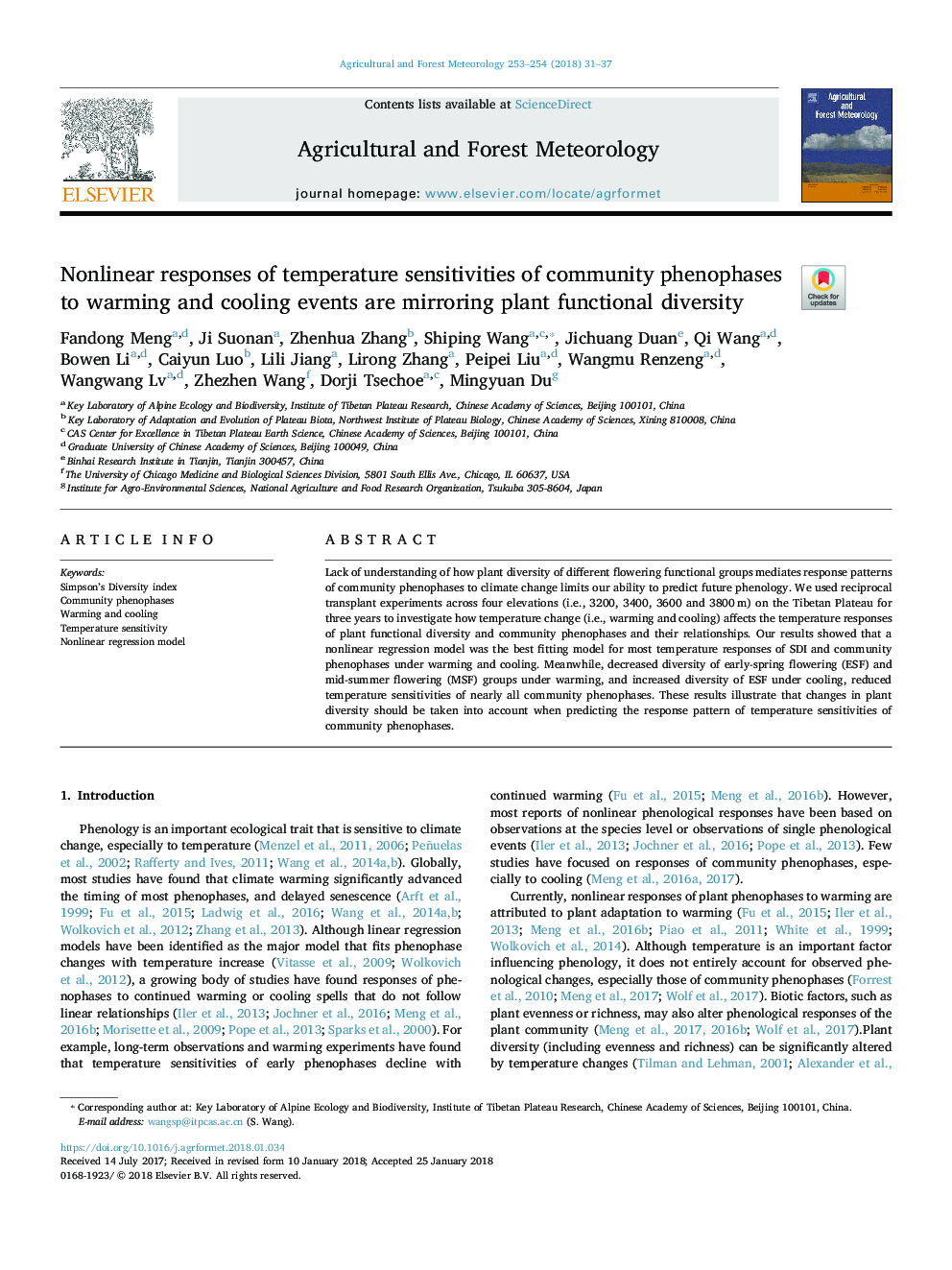| Article ID | Journal | Published Year | Pages | File Type |
|---|---|---|---|---|
| 6536735 | Agricultural and Forest Meteorology | 2018 | 7 Pages |
Abstract
Lack of understanding of how plant diversity of different flowering functional groups mediates response patterns of community phenophases to climate change limits our ability to predict future phenology. We used reciprocal transplant experiments across four elevations (i.e., 3200, 3400, 3600 and 3800â¯m) on the Tibetan Plateau for three years to investigate how temperature change (i.e., warming and cooling) affects the temperature responses of plant functional diversity and community phenophases and their relationships. Our results showed that a nonlinear regression model was the best fitting model for most temperature responses of SDI and community phenophases under warming and cooling. Meanwhile, decreased diversity of early-spring flowering (ESF) and mid-summer flowering (MSF) groups under warming, and increased diversity of ESF under cooling, reduced temperature sensitivities of nearly all community phenophases. These results illustrate that changes in plant diversity should be taken into account when predicting the response pattern of temperature sensitivities of community phenophases.
Related Topics
Physical Sciences and Engineering
Earth and Planetary Sciences
Atmospheric Science
Authors
Fandong Meng, Ji Suonan, Zhenhua Zhang, Shiping Wang, Jichuang Duan, Qi Wang, Bowen Li, Caiyun Luo, Lili Jiang, Lirong Zhang, Peipei Liu, Wangmu Renzeng, Wangwang Lv, Zhezhen Wang, Dorji Tsechoe, Mingyuan Du,
